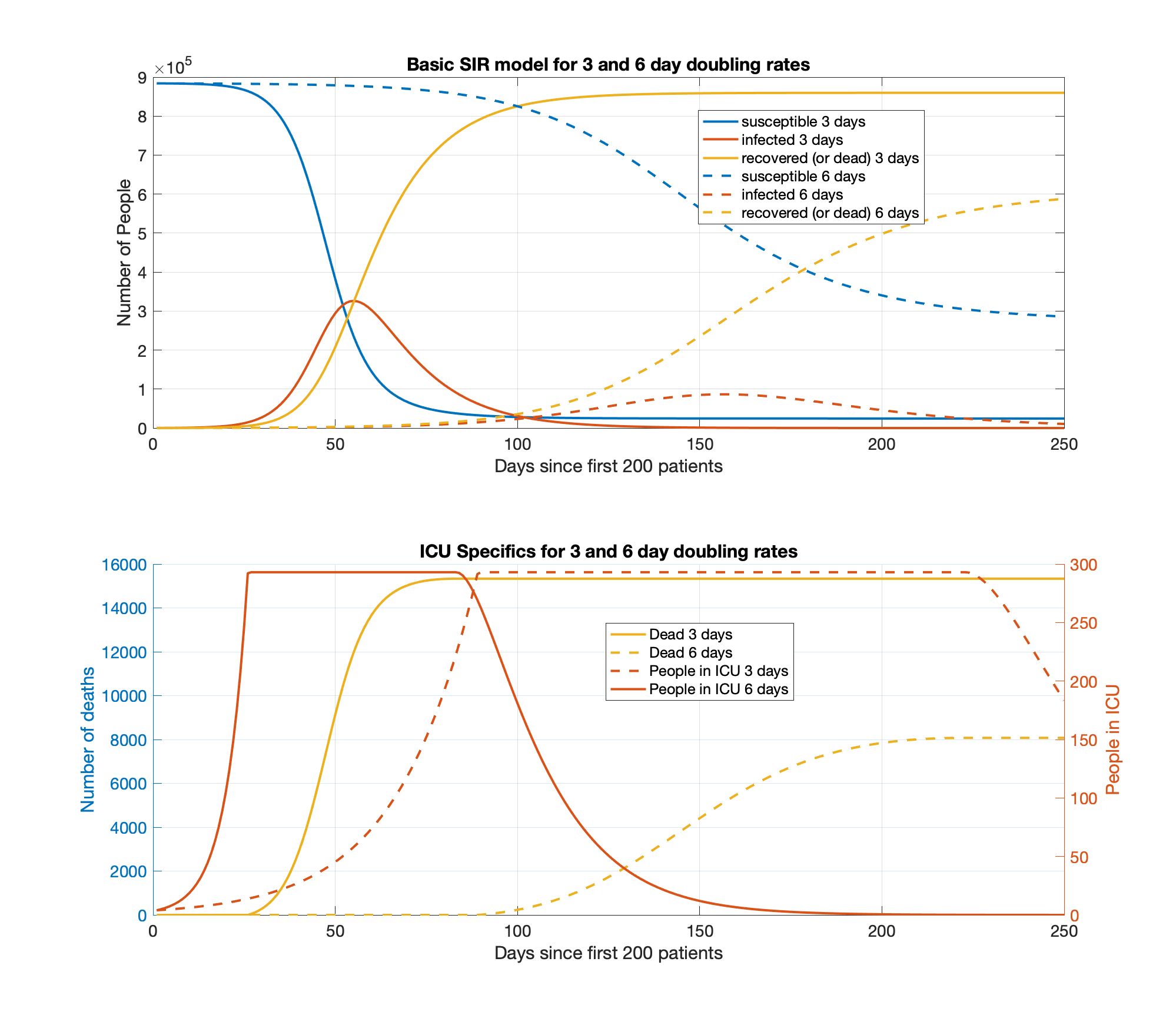Exponential growth is powerful. To manage it, you must have clear understandable goals.
“Flattening the curve” changes the length of time that the virus takes to double, but as long as the virus is able to keep doubling and doubling again, it can still overwhelm a system.
Take away: I present four different scenarios below. Decide which of these scenarios is your goal. Find out from your government what its goal is. If your own goals and your government’s goals are not aligned, then convince them that they need to act differently. If they are aligned, then demand that your government show you the data that proves that they are on track to achieve those goals.
Full Wuhan Containment - Right now people are dying from COVID-19 even though for the most part our hospitals are not overloaded. If you do not want anybody to die from COVID-19, then social isolation must be practiced so stringently that the virus halves and then halves again, rather than doubling. This is the economically most extreme measure and might be hard to implement in our open, self-centered society. We certainly allow lots of people to die on a yearly basis from flu and car accidents. What trade-offs would you be willing to make to crush this virus? China succeeded at this strategy. If no western democracy successfully implements this strategy, China will have a feather in their cap which they will use to exert their influence.
Prevent Hospital Overload - The Bay Area governments seem to be attempting to set us on this path. If this scenario is successful, deaths due to lack of equipment and supplies would be minimized. However, there would still be substantial deaths due to the natural course of COVID-19. We have no treatment for the disease and so the only care is supportive care. If this is your chosen course of action, then know that you and those you love will almost certainly contract COVID-19 at some point in the next six months to one year. Unless you contain the virus Wuhan style it will keep growing. You can try to run from the virus, but you won’t be able to hide. Even after infections peak, there will still be many infections in the environment. In this scenario, expect a number (but not the majority) of people you know who are older than 65 to die. In addition, you might know someone in the age range 20 to 65 who dies too.
Praying for an intervention - Are you hoping that increased testing will help contain COVID-19? Are you hoping for a vaccine? Are you hoping that an anti-viral will be effective against COVID-19? If any of these scenarios is what you’re hoping for, then have clear knowledge about timelines. Realistically, how long will it be until these interventions become reality? How many deaths are you willing to see while you are waiting for the intervention? Manage social distancing and the growth of the virus to keep deaths in line with your desired intervention. Know that a vaccine is well over a year out.
Let COVID-19 run rampant - This is your short, but very, very painful option. If you let everyone socialize normally, then hospitals will be overwhelmed and won’t be able to provide adequate care. Without adequate care death rates could really spike skywards. This wouldn’t be apocalyptical but large numbers of people of all age ranges would die. You will definitely know many people older than 65 who will die of COVID-19 and you will probably know a number of younger people who have died of COVID-19.
A Simple Illustration of Managing Exponential Growth to your Goals
I changed a very simple SIR (Susceptible Infected Recovered) model of this epidemic to include the following assumptions.
Ninety eight percent of the people who are infected need no additional care and recover on their own.
The remaining 2% of infections need ICU care but eventually all those patients, if they have an ICU bed, recover on their own too.
The only time people die in this simulation is when there aren’t enough ICU beds to go around. In that case I declare that anyone without an ICU bed dies.
I assume roughly 300 ICU beds for a population of 884,000.
I ran the simulation twice each time changing only the virus growth rate and assuming that our goal was to change the course of this toy epidemic.
Note in the lower plot the blue axis on the left goes with the number of dead and the red axis on the right goes with the number of people in the ICU at any one time.
“Flattening the curve” managed to reduce deaths from Roughly 16,000 to 8,000 but that’s still a lot of death.
At the same time, it pushed the point at which the ICU was overloaded back 60 days giving some time for other interventions to come into play. Solely “flattening the curve” seems unlikely in this toy scenario to prevent ICU deaths unless done to the extreme, in which case you should do Wuhan style containment.

